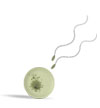

 EGG CHARACTERISTICS AND BREEDING SEASON
EGG CHARACTERISTICS AND BREEDING SEASON
FOR WOODS HOLE SPECIES:
ADDITIONAL SOURCES
Citations are given here for species or data appearing in red in Table 1 (i.e., entries not from the primary source, Costello and Henley, 1971).
Species: Fundulus heteroclitus; Limulus polyphemus; Raja erinacea; Strongylocentrotus drobachiensis
Fundulus heteroclitus
[1] Armstrong, P.B. and J.S. Child. 1965. Stages in the normal development of Fundulus heteroclitus. Biol. Bull. 128:143-153.
Limulus polyphemus
[1] Sekiguchi, K., Y. Yamamichi, Y.Seshimo, and H. Sugita. 1988. Chap. VI (pp133-181) in Biology of Horseshoe Crabs (K. Sekiguchi, Ed.), Science House Co. Ltd., Tokyo.
Raja erinacea
[1] Fitz, Jr., E.S., and F.C. Daiber. 1963. An introduction to the biology of Raja eglanteria Bosc 1802 and Raja erinacea Mitchill 1825 as they occur in Delaware Bay. Bull. Bingham Oceanographic Collection 18:69-97.
[2] Richards, S.W., D. Merriman, and L.H. Calhoun. 1963. Studies on the marine resources of Southern new England IX. The biology of the Little Skate, Raja erinacea Mitchill. Bull. Bingham Oceanographic Collection 18:5-67.
[3] Ryder, J.A. 1886. On the earlier stages of cleavage of the blastodisk of Raja erinacea Fisheries Bull. 6:1887-1888.
Strongylocentrotus drobachiensis
[1] Harvey, E. B. 1956. The American Arbacia and Other Sea Urchins. Princeton University Press, Princeton, NJ
[2] Stephens, R.E. 1972. Studies on the development of the sea urchin Strongylocentrotus drobachiensis. I. Ecology and normal development. Biol. Bull. 142:132-144.
Primary source: Costello, D.P., and C. Henley (1971). Methods for obtaining and handling marine eggs and embryos. Marine Biological Laboratory, Woods Hole, MA (Second Edition).